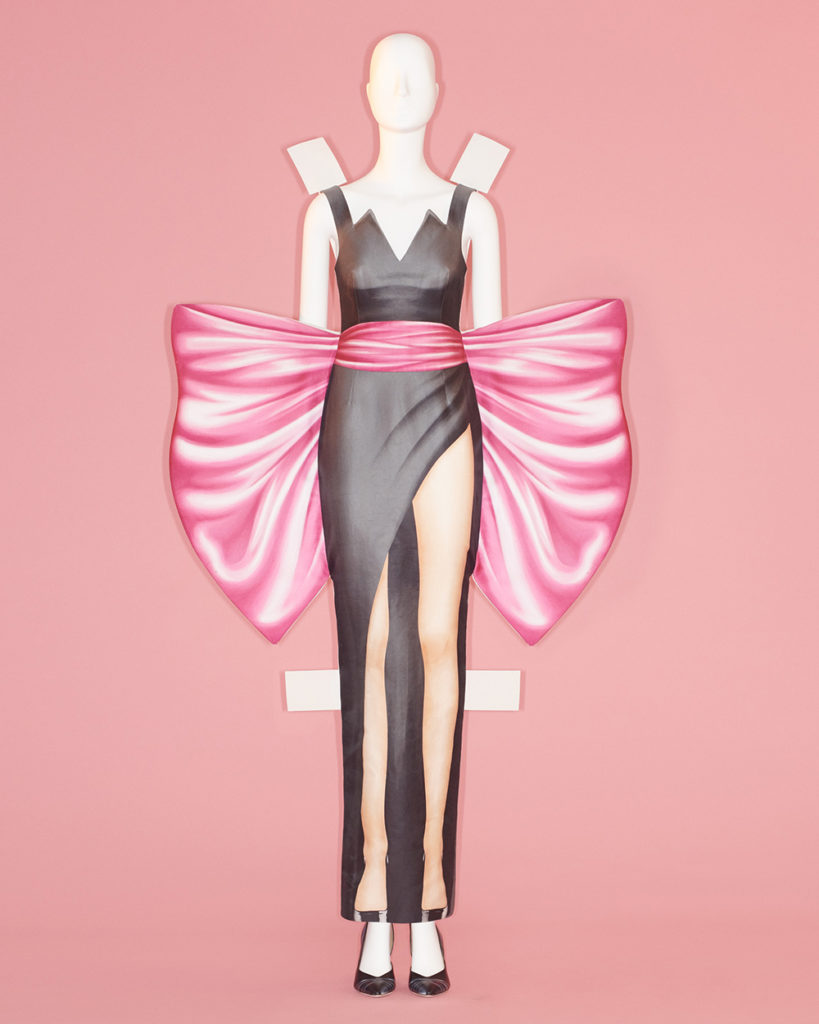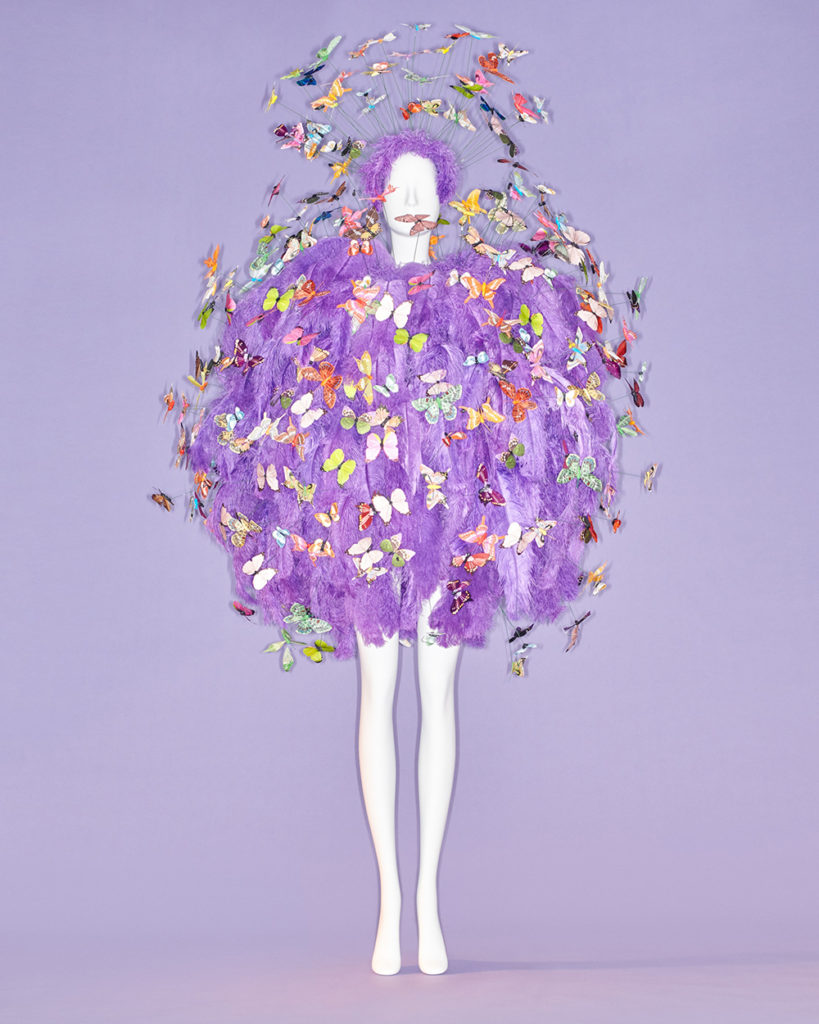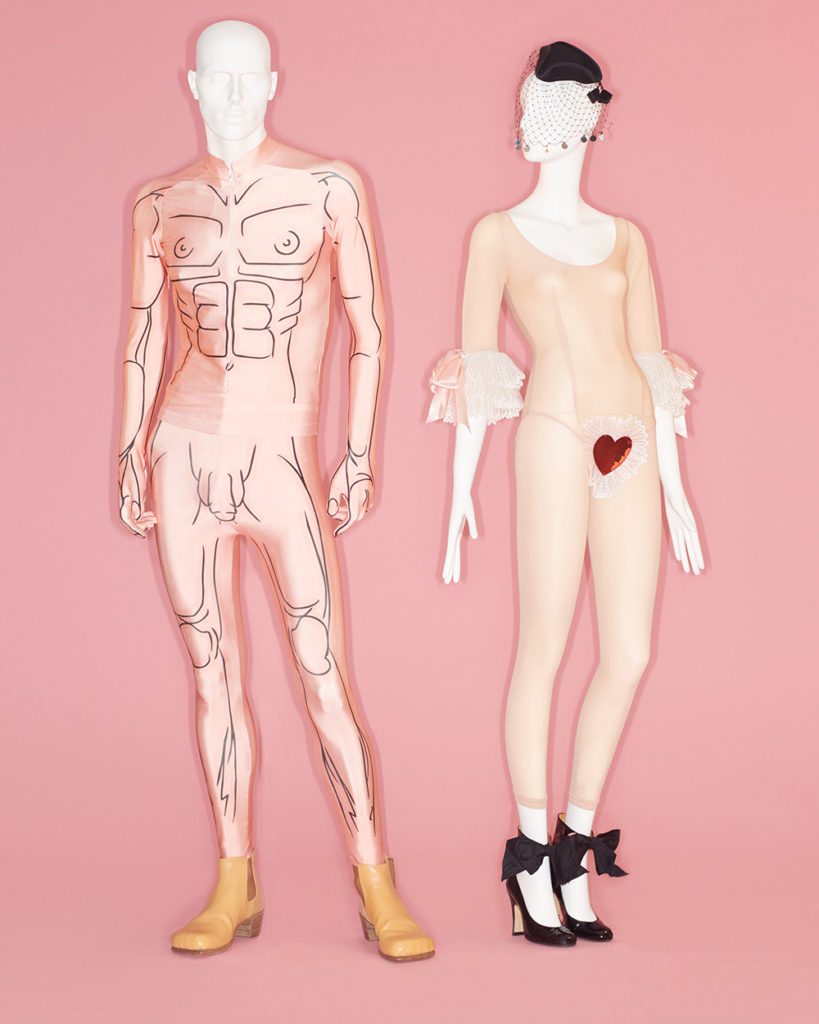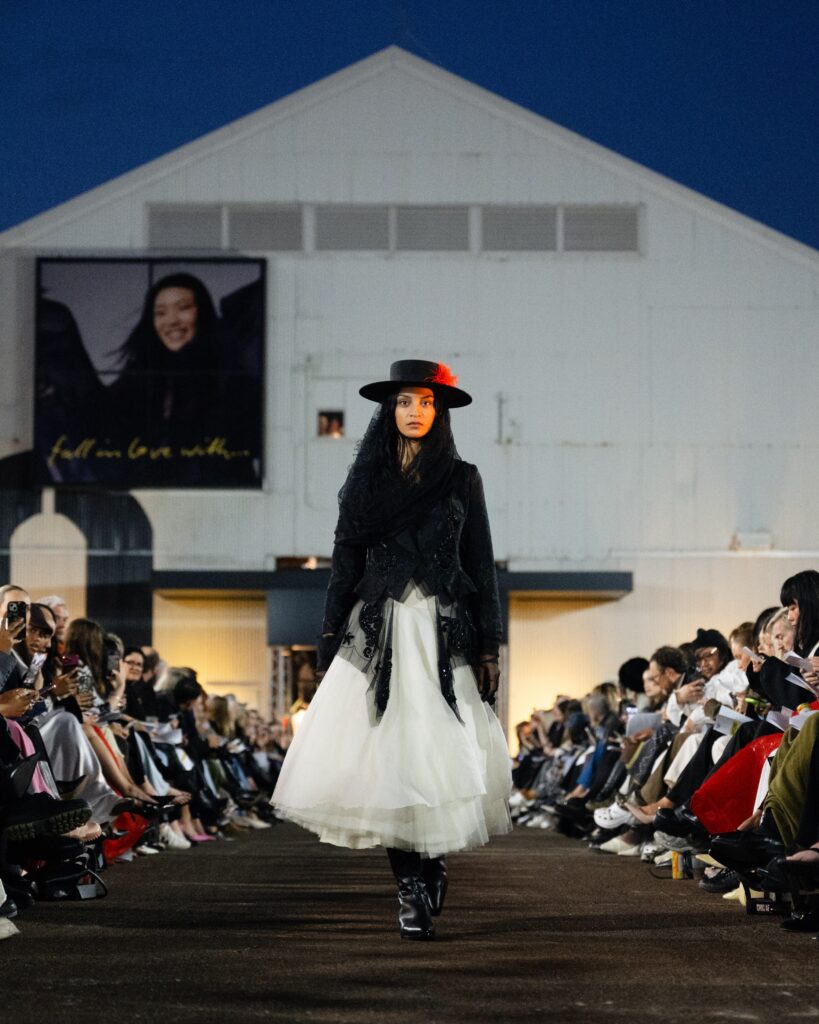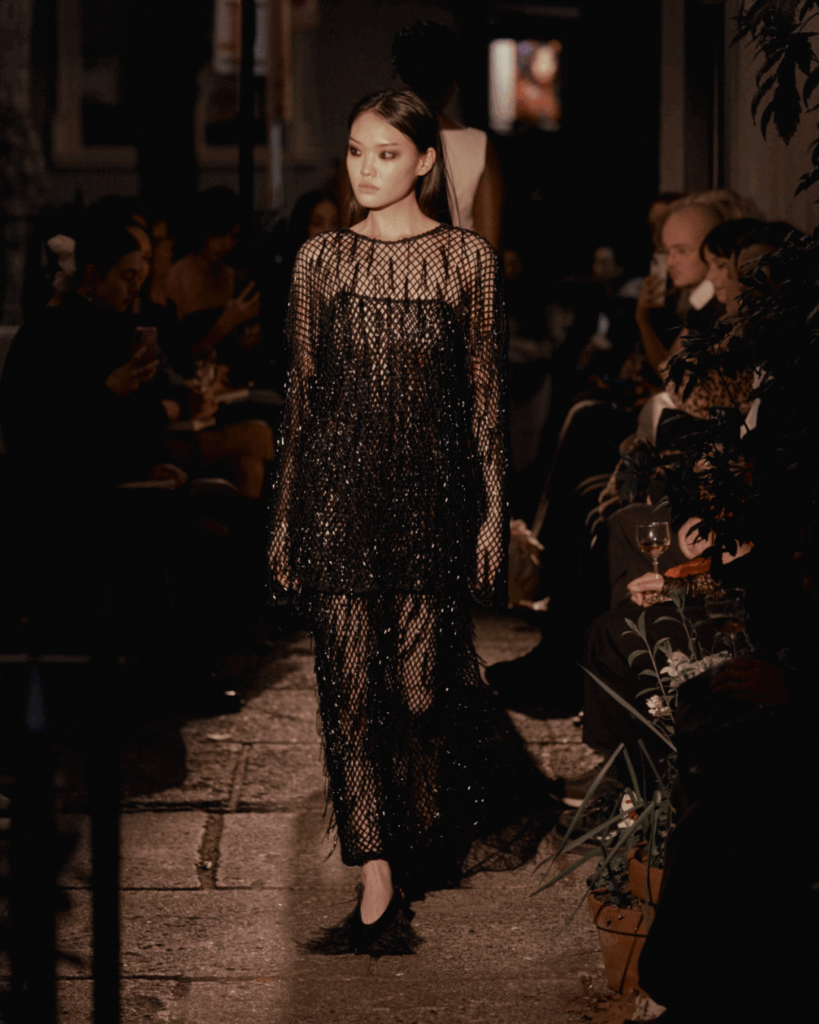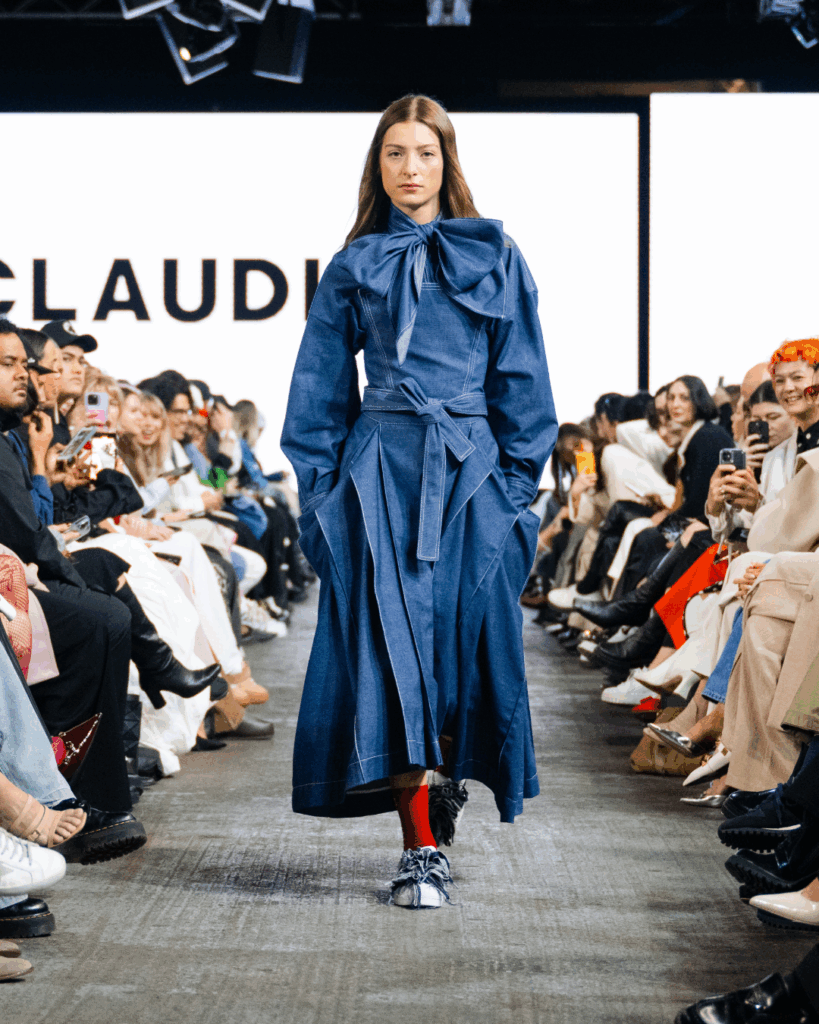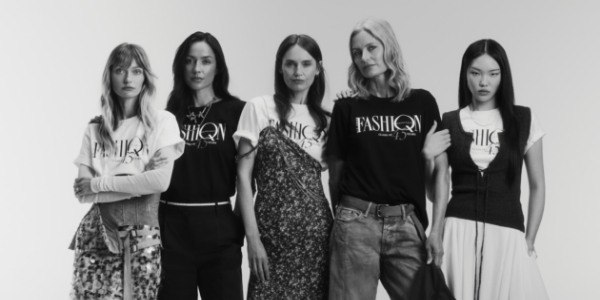From extravagance to irony, fabulous camp fashion is in the spotlight. Jessica-Belle Greer explores its complex history, and finds that now, it’s part of the everyday.
Feather boas, La Lupe and Swan Lake. On paper, these three don’t have much in common, but for feminist writer Susan Sontag, they were perfect examples of what camp can be.
In her influential 1964 essay Notes on Camp, they each helped describe the aesthetic phenomenon so hard to pin down that it took Susan 58 notes
to capture its essence.
“The hallmark of Camp is the spirit of extravagance,” she wrote at point 25.
” Camp is a woman walking around in a dress made of three million feathers.”
For Susan, fashion falls within the squiggly parameters of camp because it favours style over substance. In the spirit of not taking themselves too seriously, while also redefining what camp can mean for the 21st century, New York’s Metropolitan Museum of Art’s Costume Institute has themed this year’s exhibition ‘Camp: Notes on Fashion’.
With the Met Gala opening night held in May, arguably the most over-the-top night on the fashion calendar, camp is going meta.
The exhibition starts at the time of Louis XIV – what Susan called the “soundest starting point” for exploring camp – where the word was first used by playwright Molière to mean “theatricality”.
In the playhouse that was 17th-century Versailles, the term was given legs by the Sun King’s effeminately dressed brother Philippe, Duke of Orléans, who had a penchant for silver tights and was all too happy to dress up in a woman’s gown for courtly balls.
The pomp and promiscuity of the bygone era caught the eye of Karl Lagerfeld, who was inspired in 1987 to create a Chanel Haute Couture range with gold basques, and brocade and lace bustiers.
Fittingly, an ensemble from the Versailles collection will be displayed alongside paintings of Philippe. It’s important to note, as Susan did, that “while it’s not true that Camp taste is homosexual taste, there is no doubt a peculiar affinity and overlap”.
Flamboyancy is a foundation stone, uncovered most strikingly in Victorian England during the sensational 1870 trial of celebrity cross-dressers Fanny and Stella, who, it’s said, side-lined as sex workers to pay for their silk stockings. Wearing their party dresses from the night before, Frederick Park and Ernest Boulton were eventually found not guilty
of indecent acts and are now seen as queer pioneers.
London-based brand Erdem’s Spring 2019 collection pays homage to the pair. Victorian lace and flounced-sleeve dresses are mixed with ’90s club-kid sensibilities for a collection championing the freedom of self-expression still out of reach for marginalised communities around the world today.
“We are going through an extreme camp moment, and it felt very relevant to the cultural conversation to look at what is often dismissed as empty frivolity but can be actually a very sophisticated and powerful political tool, especially for marginalised cultures,” the Costume Institute’s head curator Andrew Bolton told The New York Times when the exhibition theme was announced.
It has been a long, hot camp summer for fashion, from Valentino’s Couture show with plumes of dyed ostrich feathers to Marc Jacobs’ oversized ’80s references and Moschino’s over-the-top ode to America’s game-show consumerism. And who can forget Rodarte, Molly Goddard and Tomo Koizumi’s frothy, larger-than-life tulle gowns?
As well as an exaggeration, quite literally in the form of silhouettes, camp also treasures humour, self-love and parody. Virgil Abloh’s LBD designs for his brand Off-White with “little black dress” printed on them and boots with “for walking” plastered across them, poke fun at Susan herself, who wrote, “Camp sees everything in quotation marks.”
With its eclectic design references and celebration of extreme individuality, the most successful, and self-aware, camp brand of our time – Gucci – is also
the main sponsor for the Met exhibition.
“Camp really means the unique ability of combining high art and pop culture; it is not kitsch,” creative director Alessandro Michelle told The New York Times. “The Met exhibition will give contemporary significance to Sontag’s perspective.”
If you’re wondering how camp as a trend can possibly pass for everyday wear, you may be surprised to find you have already worn it.
If you’ve donned leopard print, covered your phone with a playful case or just had fun with fashion in general, you’re part of the pastiche.
In the words of camp icon Oscar Wilde: “One should either be a work of art, or wear a work of art.”
Posting to social media itself is a performative “look at me” camp act, whether you’re sharing a photo of the most stylish part of your day or commenting “yas queen” on your friend’s. The highest level of camp fashion found on Instagram must be Viktor & Rolf’s memorable and meme-able Spring Couture collection, in which an oversized violet tulle dress states: “Sorry I’m late, I didn’t want to come”.
But a photo of your cat counts too. Once you start toying with the idea of camp, you can see it in almost everything – objects, people, ideas, events, politics. Think of Auckland comedian Tom Sainsbury’s lovingly satirical impersonation of MP Paula Bennett, with her paninis and bowl lattes (itself an extremely camp order).
At the other extreme, Donald Trump could be seen as representative of what Susan describes as “failed seriousness”, another aspect of camp.
Like most art forms, camp transforms with the times. Susan declared it “apolitical”, but in our topsy-turvy world, political camp is a sub-genre often used to point out indelicacies and, ironically, set things straight.
“It’s no coincidence that camp surfaces in moments of social and political upheaval – moments when our society has become deeply polarised. For camp has never lost its power to be subversive and to challenge the status quo,” wrote Andrew for a statement for The Met.
“Camp is animated by a faith in the power of the human imagination to transform, even liberate,” adds a note from Gucci. “Beauty can set you free.”


